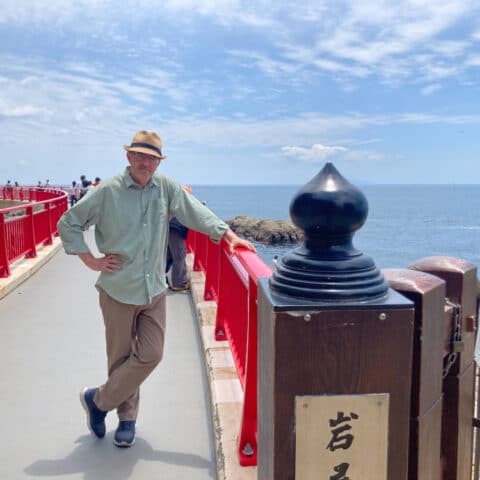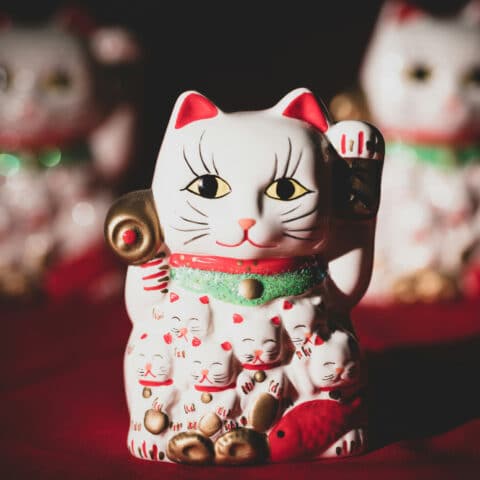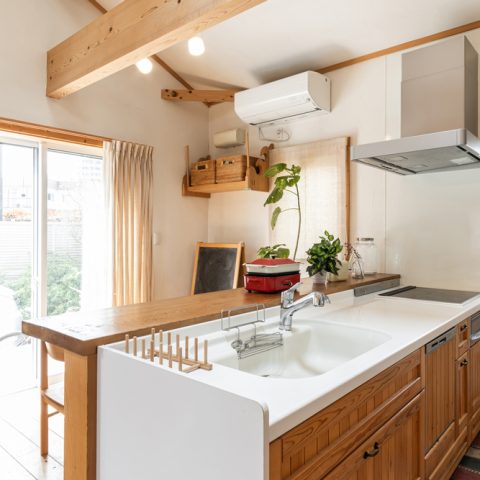
A close and personal experience with the goddess Kannon and energize your spirit with a fire ritual just a stone’s throw away from Tokyo.
Gunma Prefecture—a naturally stunning landscape located in the Kanto region of Japan that holds an abundance of nature, culture, and history. Gunma is known for its popular Daruma Dolls, natural onsen (hot spring), and picturesque mountains. But did you know that it’s also home to a towering statue of the goddess Dai-Kannon of Buddhism? You can find her at Jigenin Temple, where I had the opportunity to visit Kannon, eat like a Buddhist priest, and participate in gomma—a Buddhist fire ritual where Kannon herself comes to life.
Nestled between three mountains in the heart of Gunma Prefecture lies a city called Takasaki. It is here in Takasaki where you can find Jigenin Temple, home of the Dai-Kannon statue and one of the Top 100 Sacred Places to visit in the Kanto region. Upon entering the beautiful grounds of the temple I found that Dai-Kannon was hidden by a veil of trees. Lucky for us, she has left her footprints in stone to help guide us to her.

Entrance to Jigenin Temple and Dai-Kannon’s footprint guiding visitors to her.
Finally, at the top of the hill, you see her. Dai-Kannon stands at a towering 41.8 m (137 ft) as she lovingly watches over the people of Takasaki.

The statue of Dai-Kannon lovingly watching over her people.
She was built in 1936 by a prominent businessman named Inoue Yasusaburo, and she is made entirely of concrete. Her figure is dressed in white to help bring peace to the spirits of the dead and serve as a beacon of light for the living. The inside of the Dai-Kannon statue contains nine floors, which are open to the public. Each floor contains various statues of important deities of Buddhism and a spectacular view of the sprawling city and mountains below.

View from Dai-Kannon’s shoulder on the ninth floor.
Don’t be surprised by how much time you end up spending with Dai-Kannon. By the time I came back to ground level, I realized I hadn’t even taken a peek at the temple on the grounds. Jigenin Temple is a beautiful wooden structure with a spacious veranda decorated with antique metal lanterns from front to back and faces in the direction of Dai-Kannon. These lanterns are lit at night and give off an inviting, spiritual glow.

Front of Jigenin Temple facing Dai-Kannon and its glowing lanterns.
This temple is unique because it offers visitors an opportunity to eat like a Buddhist priest and, after a savory meal, practice meditation like one. As a rule, they do not eat meat and follow a strict vegetarian diet. Jigenin Temple has their own vegetarian-based restaurant, Ichirodo Cafe, located behind the temple that features various foods a Buddhist priest eats on a daily basis. Being a non-vegetarian myself, I was curious about this restaurant’s menu and had to check it out for myself. To my surprise, I was given the most colorful and diverse lunch set I have ever eaten.
Sweet potato salad, citrus-dressed carrots, various steamed greens, and tofu soup lined my plate, all paired with warm homemade matcha tea. My palate and my stomach were given quite the treat that day, and I left the restaurant feeling more refreshed and satisfied than I had expected. It was the perfect feeling for the meditation practice that was coming next.

Lunch set inspired by a Buddhist priest diet.
Jigenin Temple is one of the few temples in Japan where you can sign up for a Buddhist priest to lead you in proper meditation and gomma, the fire ritual. After lunch, a group of us were guided to a meditation room adorned with various pictures and statues of Buddha and Kannon. In this room, our priest taught us the proper breathing technique and sitting position for optimum meditation—basically turning yourself into a human pretzel. Don’t worry if your knees can’t handle this position! He emphasized that the best position for meditation is where one is comfortable and can breathe easily.
After our brief meditation practice, we continued our meditation in the main chamber of Jigenin Temple for the fire ritual, gomma. Inside this chamber was a highly decorated altar dedicated to the goddess Kannon. Lining the walls were one thousand tiny gold statues commemorating the generous donations made to the temple. Here in this chamber, our group was encouraged to write our wishes or desires for our future and offer them to Kannon; whether for success in our job, wealth, love, or anything else we wished. At this point, I started to feel like a fish out of water. While I respect Buddhism and other religions, it is not my faith and I felt like I was intruding. I asked our priest about it and he smiled. He told me not to worry, and to think of this experience as a cultural exchange. He said he was happy to share his beliefs and practices because the more we understand about another culture the easier it is to live in harmony with one another. I thought that was a very beautiful way to invite others to share in their joy.
The head priest went on and told us that in Buddhism it is believed our body, speech, and mind should be used for righteous purposes. The goal of gomma is to align our actions, speech, and thoughts to the actions of Kannon to help others. This ritual is designed to burn away excessive desires to help believers realize their wishes and to reignite their inner flame. Because Jigenin Temple is dedicated to Kannon, we were told that she would be present to help grant our wishes. With that, the head priest started the ritual by chanting and inviting Kannon to visit us.

Buddhist head priest performing the fire ritual, gomma.
As the flames rose, an assisting priest pounded a drum, sending our negative energy upward for Kannon to dispel. The drums are used to pound through the hearts of believers, and the chants from the priests and smoke from the blaze fill the air to cleanse the mind. At the end of the ritual the flames receded. A bell was rung with cymbals scraping in the background. The priests then bowed, offering their thanks to Kannon, and said goodbye to their deity.
As a parting gift from this experience, our priest gave us all good luck charms that he had blessed for us during the fire ritual to bring safety to us and our families. It was recommended to us to have the charm face south inside our house, preferably next to a family photo.

Overall, this was one of the best Japanese experiences I have had yet. I have lived in Japan as an expat for almost three years. I have seen her many mountains, cities, temples, and festivals, but this was the first time I was able to participate and feel a deeper connection to Japanese culture. This was a unique experience that I highly recommend readers to fit into their itinerary if they are searching for a truly authentic Japanese experience.
Special thanks to Spectrum Gunma & Gunma Travel for this opportunity!
Please ask us if you are interested in visiting Jigenin Temple.
All photos courtesy of the author: Heather from Nearby Tokyo



